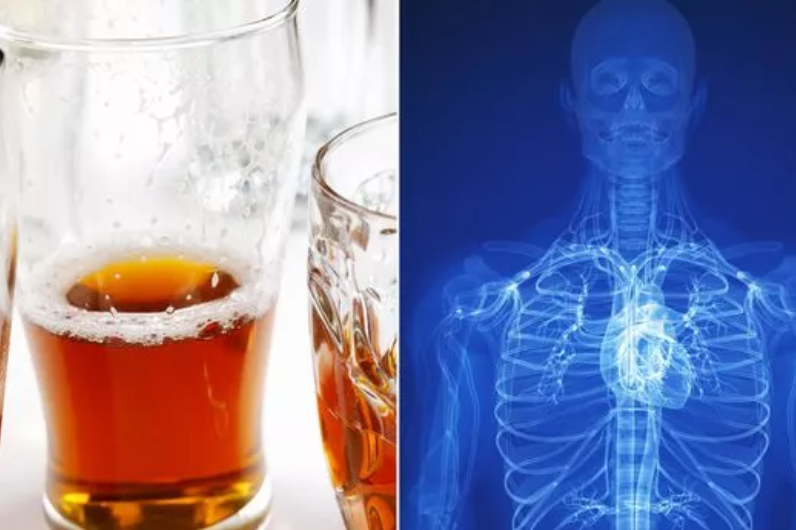Alcohol Consumption
Alcohol is a toxic and psychoactive substance known for its addictive properties. In many societies today, alcoholic beverages are deeply ingrained in social settings, particularly in environments with significant societal influence, both nationally and internationally. Despite its widespread acceptance, the health and social consequences of alcohol consumption are often underestimated. Globally, alcohol consumption contributes to approximately 2.6 million deaths annually and significantly impacts the health and well-being of millions more. Harmful alcohol use alone accounts for 4.7% of the global burden of disease. The adverse effects of alcohol are more pronounced in certain demographics. It's responsible for 6.9% of the global disease burden among males and 2.0% among females. Shockingly, alcohol stands as the primary risk factor for premature death and disability among individuals aged 20 to 39, contributing to 13% of all deaths in this age group. Disadvantaged and vulnerable populations are disproportionately affected, experiencing higher rates of alcohol-related mortality and hospitalizations. The WHO Global Status Report on Alcohol and Health, along with the Treatment of Substance Use Disorders, offers a detailed assessment using 2019 data on the public health implications of alcohol and drug use worldwide. According to the report, approximately 400 million individuals globally were affected by alcohol use disorders, with 209 million suffering from alcohol dependence. This underscores the significant public health challenge posed by alcohol consumption and highlights the widespread impact on global populations. At ROYAL MEDICAL & EQUIPMENT TRADING, we are selling medical equipment to support health initiatives and raise awareness about the dangers of alcohol use. Our commitment is to contribute positively to public health and help communities address the challenges associated with alcohol consumption.
Alcohol use's effects on health
● The report highlights that despite some reduction in alcohol-related death rates since 2010, the overall number of deaths due to alcohol consumption remains unacceptably high and amounts to 2.6 million in 2019, with the highest numbers in the European Region and the African region.
● Alcohol consumption has varying impacts across different income levels globally. In low-income countries, the death rates attributable to alcohol consumption per litre are notably higher compared to high-income countries.
● In 2019, alcohol contributed to a staggering 1.6 million deaths from noncommunicable diseases alone. This included 474,000 deaths from cardiovascular diseases and 401,000 from cancer. Additionally, 724,000 deaths were attributed to injuries such as those from traffic accidents, self-harm, and interpersonal violence. Another 284,000 deaths were linked to communicable diseases, where alcohol consumption heightened risks like increased HIV transmission due to unprotected sex and elevated susceptibility to tuberculosis by suppressing immune responses.
● Notably, young people aged 20–39 years bore the highest proportion, accounting for 13% of alcohol-attributable deaths in 2019.
Trends of alcohol consumption:
Alcohol consumption trends have shown a slight decline globally, from an average of 5.7 litres per capita in 2010 to 5.5 litres in 2019. The highest levels of per capita consumption in 2019 were recorded in the WHO European Region at 9.2 litres and the Region of the Americas at 7.5 litres. Among drinkers, the average daily alcohol consumption amounts to approximately 27 grams of pure alcohol, equivalent to two glasses of wine, two bottles of beer (33cl each), or two servings of spirits (4cl each). Such consumption levels are associated with increased risks of various health conditions, as well as higher rates of mortality and disability. In 2019, 38% of current drinkers reported engaging in heavy episodic drinking, defined as consuming at least 60 grams of pure alcohol on one or more occasions in the past month—roughly equivalent to 4 or 5 glasses of wine, beer bottles, or servings of spirits. This pattern of continuous heavy drinking was notably prevalent among men. Globally, 23.5% of individuals aged 15–19 were current drinkers. Rates of current drinking were highest among this age group in the European region at 45.9%, followed closely by the Americas at 43.9%.
Treatment gap for substance use disorders
Effective treatment options exist for substance use disorders, but access remains alarmingly low. As of 2019, data from 145 countries revealed that only a fraction of individuals in need accessed treatment services, ranging from less than 1% to a maximum of 35%. A significant majority of these countries lacked dedicated budget allocations or comprehensive expenditure data for treating substance use disorders. Furthermore, nearly half of the surveyed nations did not provide mutual help or peer support groups, crucial for aiding those affected by substance use disorders. Stigma, discrimination, and misconceptions about the efficacy of treatment contribute to these critical gaps in treatment provision, as well as the continued low prioritization of substance use disorders by health and development agencies.
Actions for progress
To advance towards achieving SDG target 3.5 and mitigate the health and social impacts associated with substance use, governments and partners must intensify efforts across eight strategic areas:
1. Increase awareness globally through a united advocacy campaign.
2. Strengthen the prevention and treatment capacity of health and social care systems.
3. Scale up training opportunities for healthcare professionals.
4. Renew commitment to implementing the Global Alcohol Action Plan 2022-2030, focusing on the SAFER package.
5. Accelerate international efforts in knowledge sharing and capacity building.
6. Collaborate with civil society groups, professional associations, and individuals with firsthand experience.
7. Improve monitoring systems at multiple levels and bolster research capabilities.
8. Scale up funding and explore innovative financing methods to strengthen health and social systems.
Conclusion
alcohol consumption is a serious global health issue that harms many people each year. It causes millions of deaths and health problems, especially among young adults and vulnerable groups. Solving this problem requires teamwork among healthcare providers, governments, and communities to raise awareness, improve treatment options, and encourage responsible drinking. At Royal Medical & Equipment Trading, we are dedicated to supporting efforts that promote health and well-being. We provide essential medical equipment to help treat and care for people affected by substance use disorders, contributing to better health outcomes worldwide.

